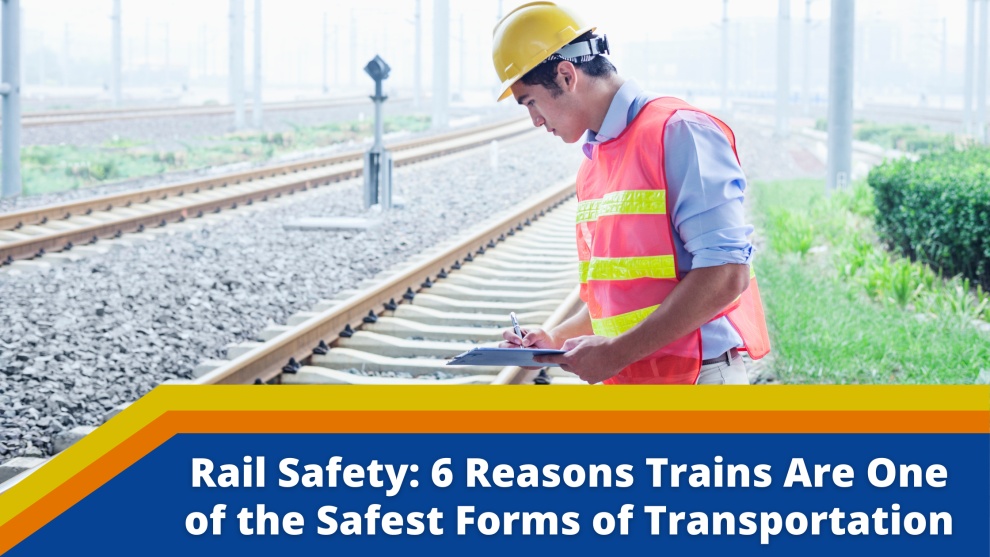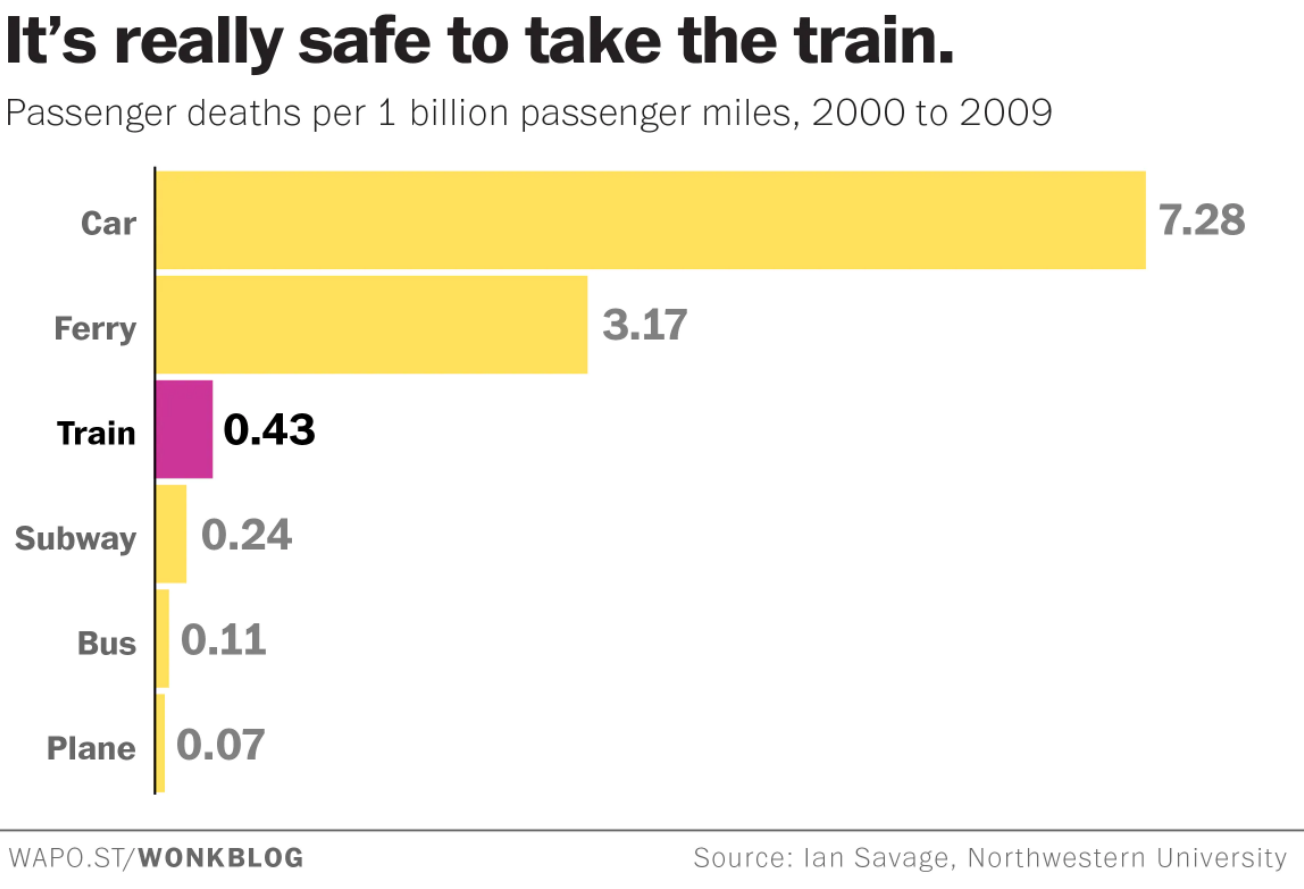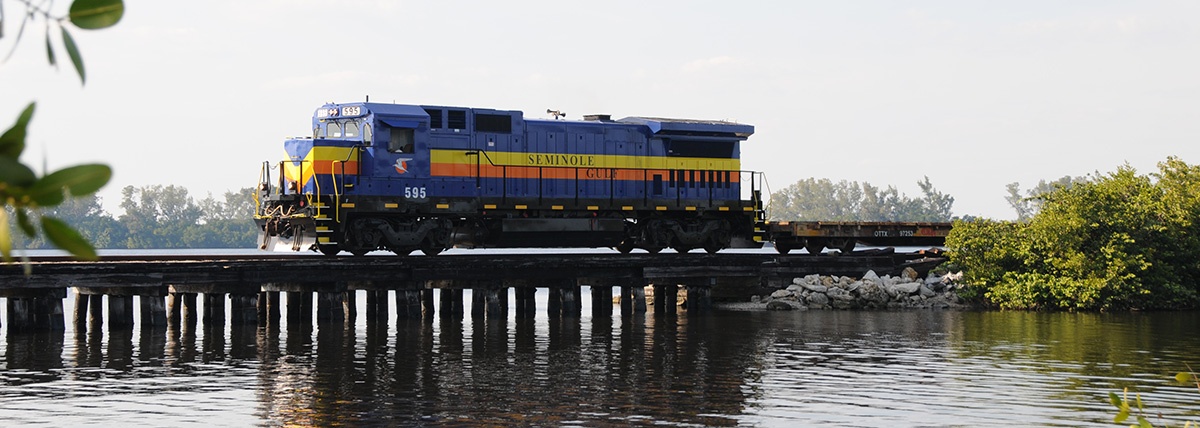
There’s a reason why trains have been around for centuries and are still one of the safest forms of transportation—it’s because they are incredibly reliable. Not only do trains provide a comfortable journey for passengers, but rail freight workers also rely on them to transport goods across the country quickly, efficiently, and—most importantly—safely.
When rail accidents do occur, they tend to make national news, and a lot of that has to do with the fact that they're so rare! So the next time you're considering your travel or freight shipping options, keep in mind that trains are an incredibly safe and reliable way to get from point A to point B.
SO, HOW SAFE IS RAIL TRAVEL?
Compared to other popular forms of travel, such as cars, ships, buses, and planes, trains are one of the safest forms of transportation in the United States. That's because trains have an excellent safety record!

According to the National Transportation Safety Board (NTSB), since 1975, there has been an average of 1.3 train accidents per year involving fatalities. Compare that with 2,584 aviation accidents and 700 bus accidents over the same time period.
WHAT MAKES TRAINS SO SAFE?
There are six main factors that contribute to the effectiveness of train safety. These include:
1. Infrastructure investments
Railroads are constantly investing in their infrastructure in order to improve safety. In fact, the railroad industry has invested more than $560 billion in infrastructure and equipment since 1980. For example, tracks are regularly maintained and repaired to ensure that they are up to code and can handle the immense weight of trains. Train stations are also kept up to standards and must meet stringent rail safety requirements.
2. Implementation of advanced technology
In recent years, the railroad industry has adopted various technologies to help make its operations safer, such as GPS tracking, positive train control (PTC), and more. PTC is a GPS-based technology that helps to prevent accidents by automatically slowing down or stopping a train if it senses that it is going too fast or if there is a potential collision.
3. Ongoing employee safety training
From their design to the way they're operated, trains are built for safety, and the personnel who work on and around trains are highly trained professionals who take safety very seriously. All railroad employees, from engineers to conductors, receive extensive safety training on a regular basis. Railroads also have strict rail safety rules and regulations that employees must follow at all times.
4. Trains are more spaced apart
In addition, trains are typically spaced much further apart than other modes of transportation, such as cars and buses, which makes it less likely for accidents to occur. This gives trains a much larger margin for error and more time to stop if necessary.
5. Trains are not as affected by weather conditions
Another factor that makes trains safer is that they are not as affected by severe weather conditions as other forms of transportation, such as planes and buses. This is because trains run on tracks, which provides a stable surface for them to travel on, no matter the weather. Trains typically have little trouble cutting through strong winds, rain, and snow, making them far less prone to weather-related accidents.
6. Trains have multiple safety features that work together
Trains have multiple rail safety features that work together to slow or stop the train if an emergency arises. For example, most trains have an emergency brake system that can stop the train within a short distance. In addition, many trains are equipped with special couplers that detach automatically if two trains collide. This helps to prevent the cars from derailing and causing serious damage or injury.
FINAL THOUGHTS ON RAILROAD SAFETY
As you can see, there are many reasons why trains are one of the safest forms of transportation today. To learn more, check out the American Short Line and Regional Railroad Association’s safety and compliance resources.

Are you looking to haul lumber, building materials, aggregates, plastics, LP gas, or any other commodities? Seminole Gulf Railway is the experienced freight shipping partner you need. Since 1987, we’ve been providing our customers with unmatched rail freight transportation, transloading, regional trucking, and warehousing services. Contact us today to start hauling your goods with a partner you can trust.
